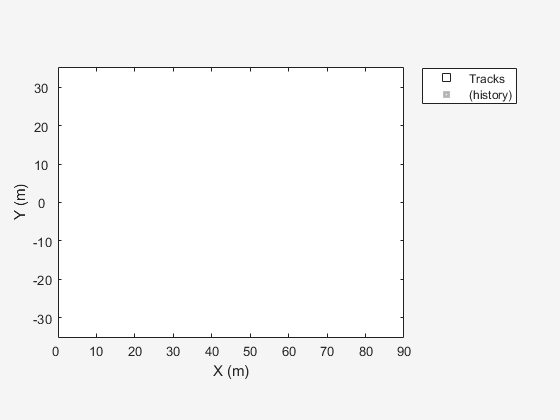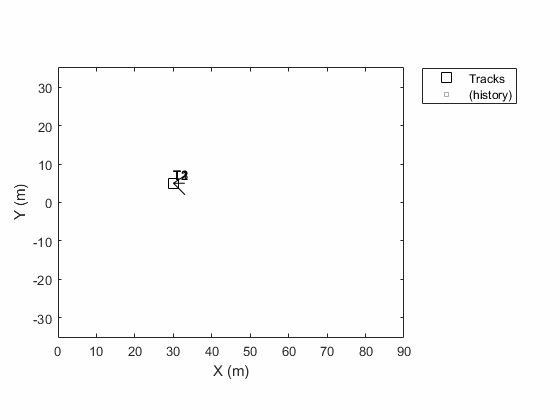plotTrack
Plot set of tracks in theater track plotter
Syntax
Description
plotTrack(
also specifies the corresponding velocities of the objects. Velocities are plotted as line
vectors emanating from the positions of the detections. If specified,
tPlotter,positions,velocities)velocities must have the same dimensions as
positions. If unspecified, no velocity information is plotted.
plotTrack(___, also
specifies the covariances of the M track uncertainties. The input
argument covariances)covariances is a 3-by-3-by-M array of
covariances that are centered at the track positions. The uncertainties are plotted as an
ellipsoid. You can use this syntax with any of the previous syntaxes.
plotTrack(
also specifies the labels and positions of the M objects whose positions
are estimated by a tracker. The input argument tPlotter,positions,___,labels)labels is an
M-by-1 cell array of character vectors that correspond to the
M detections specified in positions. If omitted,
no labels are plotted.
plotTrack(
also specifies the unique track identifiers for each track when the tPlotter,positions,___,labels,trackIDs)'ConnectHistory' property of tPlotter is
set to 'on'. The input argument trackIDs can be an
M-by-1 array of unique integer values, an M-by-1
array of strings, or an M-by-1 cell array of unique character
vectors.
If trackIDs is omitted when 'ConnectHistory' is
'on', then the track identifiers are derived from the labels input
instead. The trackIDs input is ignored when
'ConnectHistory' is 'off'.
plotTrack(
specifies the dimension and orientation of each tracked object in the plot.tPlotter,positions,___,dimensions,orientations)
Examples
Input Arguments
Version History
Introduced in R2018b




